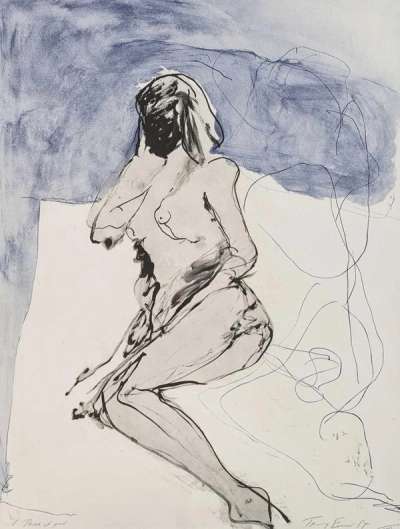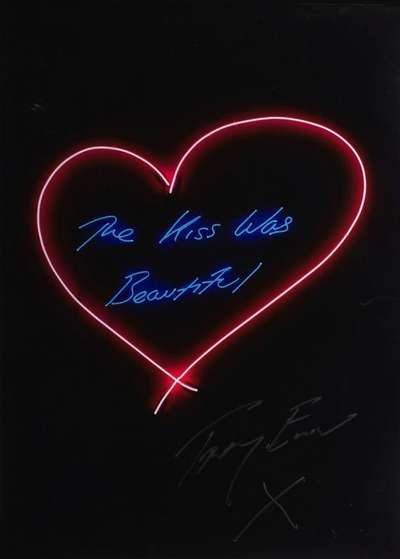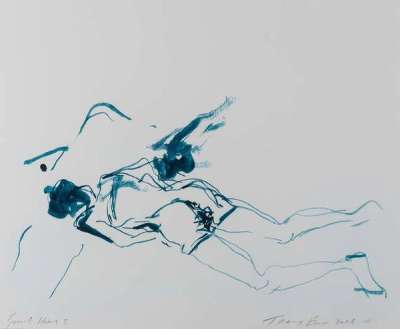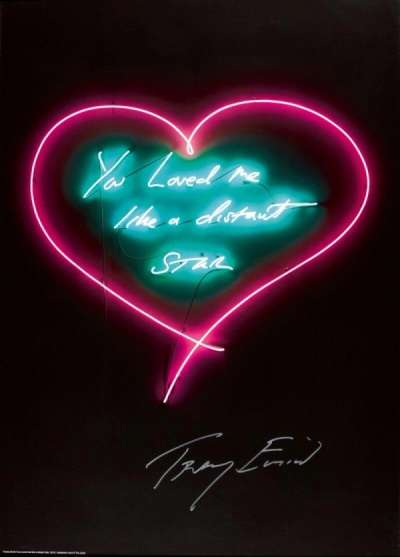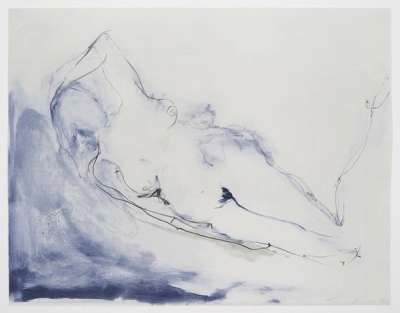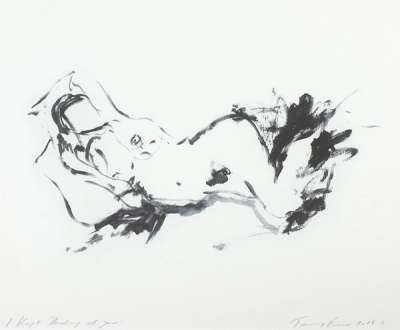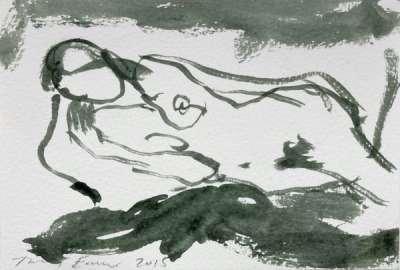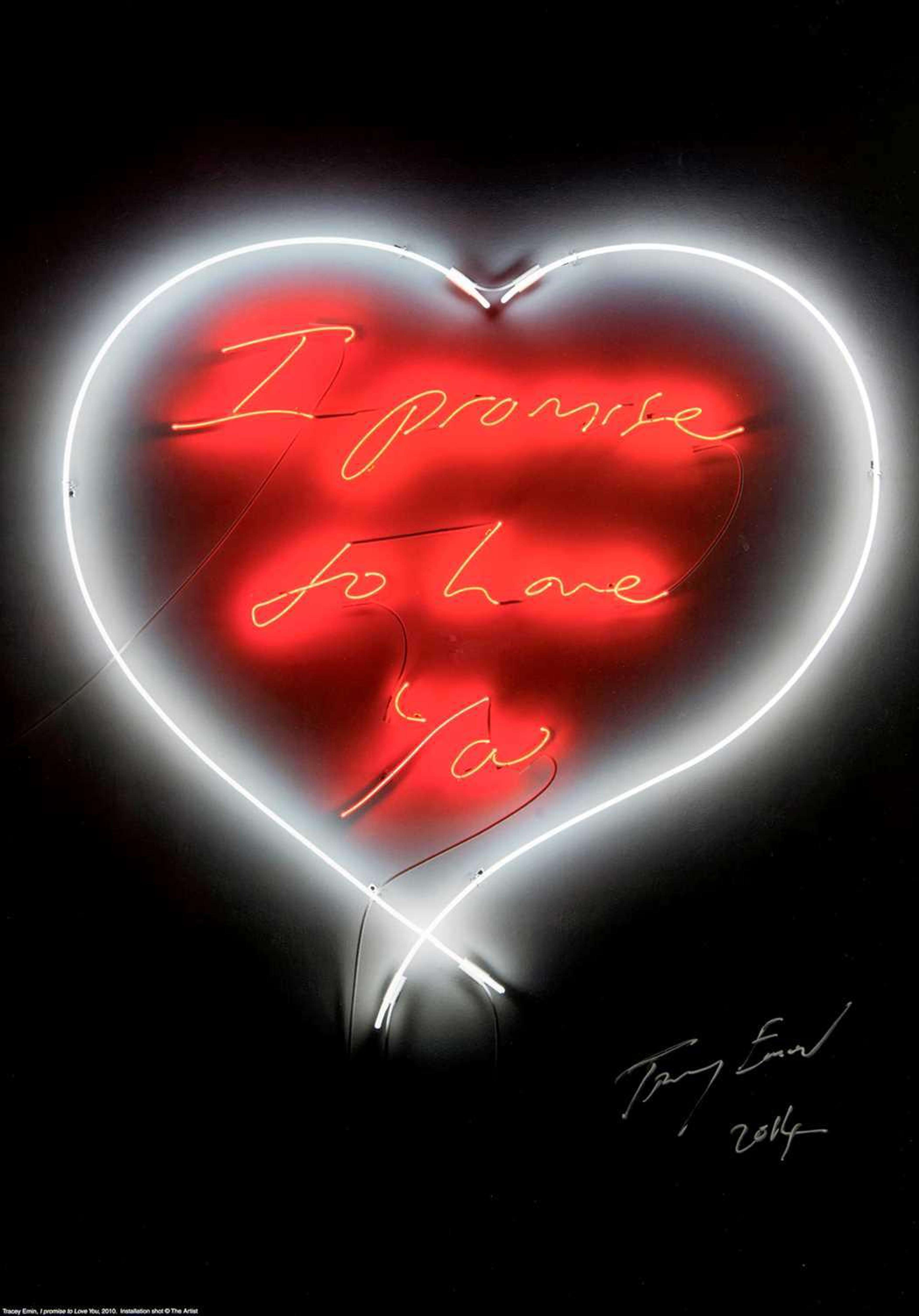 Image © Instagram @wellerharry / Tracey Emin standing next to The Doors at the National Portrait Gallery, London © Tracey Emin 2023
Image © Instagram @wellerharry / Tracey Emin standing next to The Doors at the National Portrait Gallery, London © Tracey Emin 2023The National Portrait Gallery, located in the heart of London, is one of the city's most cherished art institutions. However, it was closed to the public for the past three years as it has undergone a comprehensive refurbishment. This massive project, which cost £41 million, aimed to modernise the historic building, improve accessibility and create additional space for displaying the gallery’s extensive collection. For its grand re-opening, the gallery also commissioned a new installation for its large bronze doors, relying on the feminist perspective of celebrated artist Tracey Emin to redress some of the gender imbalance present within the historic institution. The result is stunning, with forty-five new female portraits now greeting visitors and sending a strong message of equality.
 Image © Tate / My Bed © Tracey Emin 1998
Image © Tate / My Bed © Tracey Emin 1998Tracey Emin Takes Centre Stage: The Artist Behind The Doors (2023)
Tracey Emin was born in London in 1963, and is one of the most prominent and provocative artists in the contemporary art scene. Emin rose to prominence in the 1990s as part of the Young British Artists (YBAs) group, known for their shock tactics and willingness to push the boundaries of decency and good taste.
Emin's work is known for its raw confessional nature, often drawing directly from her personal experiences. She works across various mediums, including painting, drawing, sculpture, film, photography, neon text and sewn appliqué. One of her most notable works is My Bed (1998), a piece that featured her own unmade, dishevelled bed, surrounded by detritus such as empty alcohol bottles, cigarette butts and used condoms, presenting a stark, intimate portrayal of her life at that point in time. The work earned her a nomination for the 1999 Turner Prize.
In 2007, Emin represented Great Britain at the Venice Biennale and, in 2011, she was appointed a Professor of Drawing at the Royal Academy, London. The same year, she was awarded an Honorary Doctorate from London Metropolitan University and became a Royal Academician. In 2013, Queen Elizabeth II appointed her Commander of the Most Excellent Order of the British Empire for her contributions to the visual arts. Emin's work has been exhibited extensively around the world, including solo and group exhibitions in Holland, Germany, Japan, Australia and the United States. She continues to create art that challenges, provokes and inspires, cementing her place as one of the most significant artists of her time.
 The Gates Of Paradise © Lorenzo Ghiberti 1452
The Gates Of Paradise © Lorenzo Ghiberti 1452The Rich History of Door Designs by Renowned Artists
The history of artists working with bronze doors is a rich one, dating back centuries, with Tracey Emin continuing this tradition with her distinctly unique flair. Doors have been considered a form of art for centuries, offering artists a chance to showcase their craft on a grand, enduring scale. One of the most famous examples is the Gates of Paradise by Lorenzo Ghiberti, a set of gilded bronze doors for the Baptistery of Florence Cathedral, Italy. Completed in 1452 after 27 years of meticulous work, Ghiberti's doors are widely considered a masterpiece of Renaissance art, featuring detailed relief panels depicting biblical scenes. In Rome, the Porta Sancta of St. Peter's Basilica is another remarkable example. Sealed from the inside and only opened for holy years, it has been replaced a few times over the centuries, with the latest iteration having been designed by Vico Consorti, an artist who created many magnificent doors over the course of his career.
Auguste Rodin, the famed French sculptor, is also well-known for his monumental door project, The Gates of Hell. Commissioned in 1880 for a proposed museum of decorative arts in Paris that was never built, Rodin worked on this masterpiece intermittently until his death in 1917. The massive bronze doors are decorated with over 200 individual figures inspired by Dante Alighieri's Inferno. The compositions of the figures range from life-sized to miniature, all exhibiting a dramatic tension that's characteristic of Rodin's work.
In designing the doors for the National Portrait Gallery, Tracey Emin is not just updating the institution with a contemporary touch but is also bringing some much-needed female representation by engaging with this historical tradition. By contributing to this tradition, she is part of a long lineage of artists using bronze to create public art that is functional, deeply symbolic and significant. Through this, she continues the dialogue between contemporary art and the rich historical tapestry from which it springs, bringing a fresh perspective to a centuries-old tradition.
 Detail of The Doors © Tracey Emin 2023
Detail of The Doors © Tracey Emin 2023Emin's Female-Championing Design for the National Portrait Gallery Doors
For the new, refurbished gallery, Emin designed three four metre-high bronze doors, featuring a total of forty-five portraits of what the artist has called “every woman”. The portraits are done in low-relief, using the artist’s characteristic drawing style and fine lines.
The doors act as a celebration of women from all walks of life and a foil to the roundels of prominent men that adorn the building and overlook the gallery’s entrance -- hinting at a modernisation of the museum that goes beyond mere aesthetic practicalities. Like most of Emin’s art, it does not shy away from vulnerability, with the women shown in a variety of emotional states. It is a piece that is inviting, allowing women to feel like they belong in the museum as much as the men who have dominated the art world, its literature and institutions, for centuries.
 Image © Instagram / @wellerharry / Inside Tracey Emin's studio, preparing portraits for The Doors © Tracey Emin 2023
Image © Instagram / @wellerharry / Inside Tracey Emin's studio, preparing portraits for The Doors © Tracey Emin 2023 Image © Instagram @wellerharry / Tracey Emin In Her Studio 2023
Image © Instagram @wellerharry / Tracey Emin In Her Studio 2023What Do Emin’s Doors Say About The Updated National Portrait Gallery and Its Future?
The doors are only the most obvious sign of a clear shift in culture within the gallery, which is making big strides towards inclusivity. The gallery’s director Nicholas Cullinan has said: “We’re meant to reflect Britain as it is, and obviously, if your collection only represents a fraction of Britain, then that’s a problem. We serve Britain, we’re funded in part by the British people, and we also serve an international audience; it’s our duty to represent that. And that includes diversifying the collection in all senses, and achieving gender balance.” The fact that a great portion of the general population did not feel represented by the museum was evident in its relatively-low visitors numbers, something that Cullinan aimed to redress.
In the new rehang, 48% of the artworks in the 20th and 21st century galleries are by or feature women, compared with the previous 35% before refurbishment. The commissioning of Emin to design its new doors is another indication of the gallery's commitment to promoting the visibility and representation of women artists and sitters, which hopes contribute to a larger societal shift towards equality and inclusivity.
The decision to invite Emin, known for her intensely personal works, also signals a willingness to broaden the range of voices and experiences represented in the gallery. This aims to challenge traditional conceptions of what is considered worthy of inclusion in such a prestigious institution, pushing the boundaries and promoting a more inclusive understanding of art.
By positioning Emin's work at the very entrance of the gallery, the institution is making a bold statement about its commitment to this new direction. Visitors will encounter Emin's perspective as soon as they enter, immediately experiencing the gallery's expanded scope of representation. The choice of Emin as the artist for this prominent commission is symbolic of a larger trend within the art world – and society in general – towards recognising and addressing historical injustices, creating a more diverse and inclusive vision of the future.
 Image © CounterEditions / NPG Print Portfolio © Tracey Emin 2024
Image © CounterEditions / NPG Print Portfolio © Tracey Emin 2024Tracey Emin x Counter Editions x National Portrait Gallery Fundraising Effort
In March 2024, Emin and Counter Editions announced a fundraising collaboration celebrating the National Portrait Gallery featuring four exclusive, limited-edition prints. These included: I Just Felt Hurt, This Is Forever, I'm Still Beautiful In My Mind and There Is No Fear, as well as a complete portfolio with each work.
Each individual print was made in an edition of 100, with profits going to the NPG.



